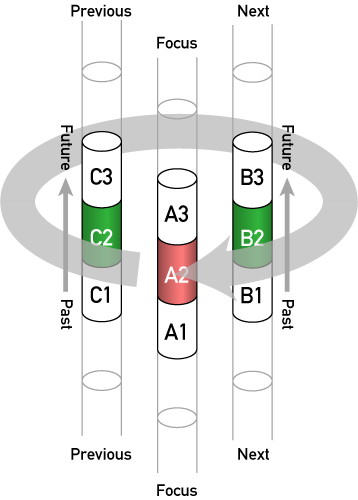Talk:Nodal reduction
Here is the latest version of the reduction illustration. Also, rather than having text in the graphic, it would be better to use a caption. --Rob 13:47, 27 Aug 2006 (NZST)
- Note: vertical arrows around the other way.
- Conceptual considerations
- Rotation moves clockwise because timeline ascends from left to right
- Future is above, past below
- Direction of arrow is always from future to past
- There are usually many items in the loop so ... symbols or grey'ed out columns could indicate the other items in the loop
Woops! Better ask Rob to re-do it! Better do another whiteboard session on identity too, are you ready for it soon? Jack 09:30, 25 Aug 2006 (NZST)
- Yip, I'm ready and stocked up on coffee beans - and what about your old friend the rhinocerous, haven't heard much from him lately?
Notes
Currently the model is that an executing function binding can interact with the local global environment using either the languages own hash-table syntax as in nodal-wikid.pl, or using specific functions as in peer-nodal.as. Only the functional method is used now as in nodeSpace.c.
It seemed preferable to remove the concept of interfaces in order to give direct nodal access to the code, but wait states can occur in reads if they have to instantiate due to first-read which means that the function could easily take non-infinitesimal time to execute.
If we take a more UML/DOM-like approach we instead can nodally describe not only the OO and program flow control aspects, but also the function interfaces (names and entry/exit parameter lists). This means that the retrieval of the nodal information required to execute the function is being executed through nodal reduction.
The function itself executes after all information is present, and does not ever interact directly with the outside environment, so no nodal access syntax or functions are required.








